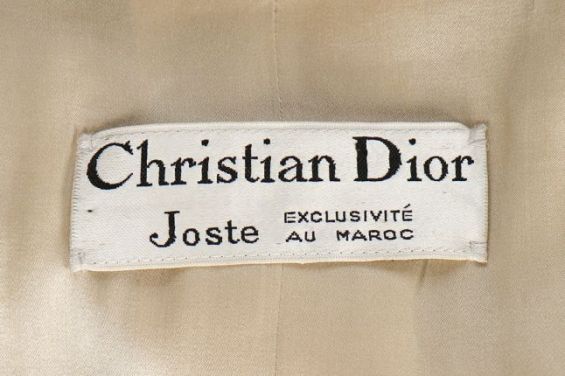Morocco and Dior, the emblematic French luxury fashion house, share a deep history. The Kingdom of Morocco, with its centuries-old fashion heritage, once crossed paths with the haute couture label.
The story between Morocco and Dior began in Casablanca in the 1950s. At the time, the North African metropolis was undergoing a fashion revolution, with local haute couture houses merging tradition with modernity.
A local Casablanca fashion house, known as Joste, attracted the attention of Christian Ernest Dior, the founder of one of the world's top fashion houses. Drawn by the beauty and craftsmanship of Moroccan fashion, particularly the Caftan, Dior decided to partner with Joste to create an exclusive line for the French fashion maison in Morocco.
According to the French daily Le Monde, in 1951 Monsieur Dior teamed up with Joste to «produce the couturier’s designs on-site for a local clientele». «Lucky, one of the house’s favorite models, left a few shots of herself in Casablanca in the archives», the newspaper recalls.

This prestigious collaboration was no accident, as Joste had become the place to be for high fashion in Morocco in the 50s. Created in 1934 by a French woman, Joste not only featured collections by Christian Dior but also works from other big names in the industry, including Lucien Lelong and Yves Saint Laurent, the founder of YSL.
A collaboration that lasted for decades
Through its designs, Joste played «an important role in introducing French fashion aesthetics to Morocco», wrote fashion anthropologist Maria Angela Jansen in her paper Joste – Tamy Tazi – Yves Saint Laurent: A Story of Cultural Appropriation, Otherness, and Self-Definition.
The collaboration between Joste and Dior resulted in emblematic pieces, now considered vintage and sold online to fashion collectors. Some of these include a vintage Christian Dior Boutique Joste Maroc purple linen dress, a small black dress in finely pleated muslin, a pink satin evening dress richly embroidered with pearls, and a black silk velvet gown from the 1980s. All featured an authentic label reading «Christian Dior Joste Exclusivité au Maroc».

The partnership between the French luxury couture house and Casablanca’s Joste continued into the late 1980s, even after the passing of Monsieur Dior in 1957.
This collaboration provided greater exposure for Morocco’s fashion industry. In the 1970s, Moroccan couturière Tamy Tazi took over Joste, becoming an influential fashion designer in her own right. Jansen noted that Tazi «became part of the first generation of Moroccan designers who modernized and revolutionized Moroccan fashion by introducing European aesthetics, achieving remarkable success abroad».

Thanks to her friendship with Yves Saint Laurent, Tazi integrated Moroccan heritage into her designs, helping introduce Caftans and Gandouras to the global fashion scene in the 60s and 70s, as the bohemian style took hold. Many celebrities, including American First Lady Jackie Kennedy, Dutch actress Talitha Getty, and French actress Catherine Deneuve, have worn these Moroccan-inspired designs.




 chargement...
chargement...












